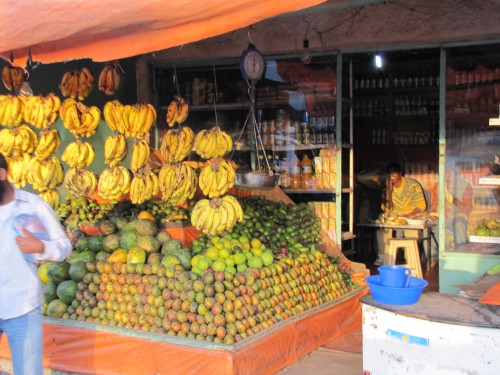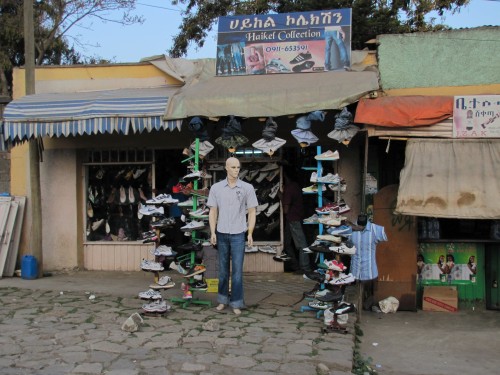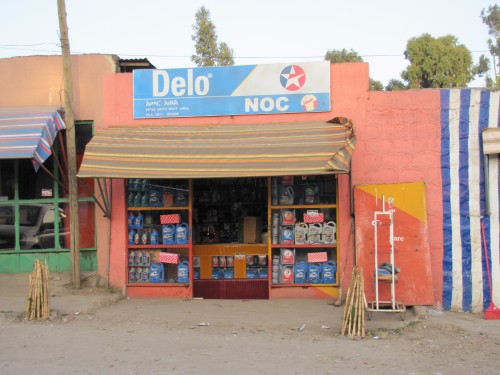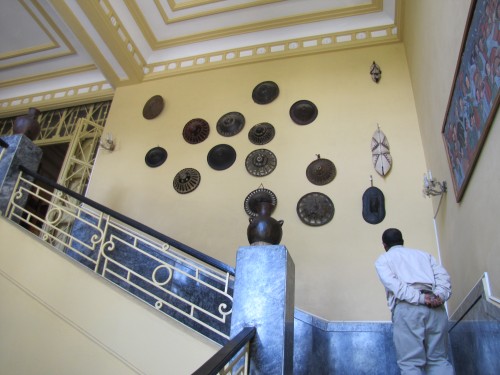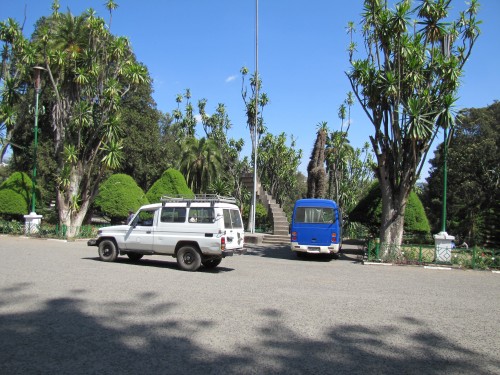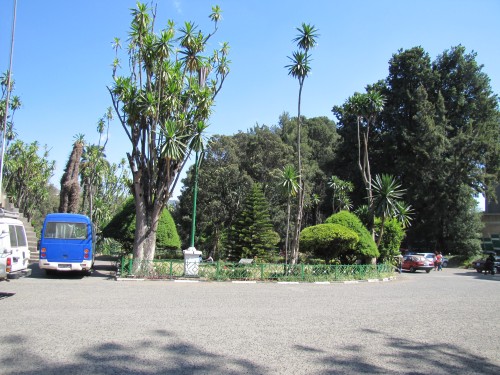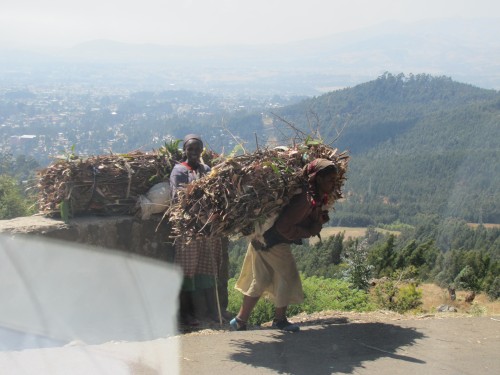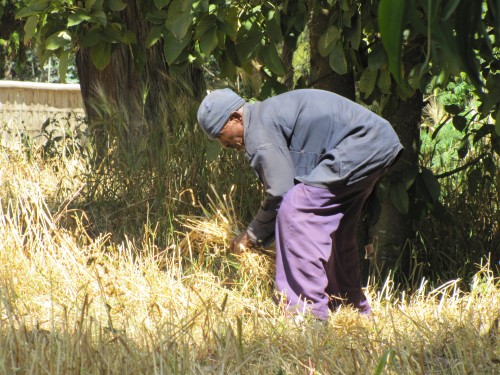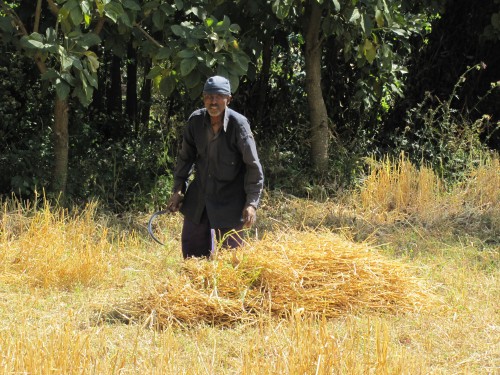Shopping in Addis Ababa
Like many African and Asian cities, Addis Ababa in Ethiopia is an intriguing place to go shopping. While we didn’t do all that much shopping while visiting our daughter, we saw enough to be fascinated by the differences between Africa and Australia, but also interested in the similarities.
In today’s post I am featuring three kinds of shops: a fruit shop, a clothing shop and a shop selling just car oil (though it might have also been selling car parts; I didn’t go inside).
Like in Australia, shop keepers often spill their wares out onto the footpath (though the footpath shown above is quite a rarity, being actually a reasonably smooth surface).
Cottage industries in Addis Ababa
On the final evening of our stay in Addis Ababa we went for walk in a nearby street. This was a typical suburban street with active markets on the footpaths and many shops open with their wares spilling out onto the footpath.
I actually use the term “footpath” loosely; there was no real path, or smooth walking surface. I am referring only to the space between the shop frontages and the road. Because these “footpaths” were often rocky, uneven, rutted, muddy and unsuitable for easy walking, so most people walked on the road. The constant hooting of car and truck horns resulted from waves of pedestrians clogging up the road’s surface.
One of businesses which intrigued my wife is shown in the above photo. It shows a man sewing on an old treadle sewing machine. On an earlier trip in Nepal I saw this activity in many places.
Another cottage industry we saw in a number of areas of Addis Ababa was furniture making, shown in the photo below.
Ethnological Museum, Addis Ababa, Ethiopia
On our return from visiting Entoto Natural Park near Addis Ababa we directed our driver to find an art gallery we wanted to visit. With a little difficulty we found the building in a back street, only to find that it had closed some time ago. Our driver suggested a good alternative – the Ethnological Museum.
The above photo shows part of the entrance into the museum, but after that point I was not allowed to take any photos. We found that that museum was a fascinating place to visit and were sorry we only had about an hour to spend there. A whole day visit would be advisable to anyone wishing to see this great display of cultural and artistic aspects of Ethiopia. If that is not possible, even a two or three hours would be recommended.
An very interesting part of the display is the section dedicated to Emperor Hailie Selassi. He used the building as his palace during the time he led the country. I think it is quite fitting to have this building dedicated to his important place in Ethiopian history. Our elderly guide was once a personal servant of the emperor himself.
Addis Ababa University
The old palace and museum is situated in the midst of the Addis Ababa University. While we didn’t explore the grounds of the university, I did take the photos shown below while we were there.
Firewood gatherers, Entoto, Addis Ababa
Poverty is obviously in your face when you visit Ethiopia. Certainly, steps are being made to overcome the abject poverty of so many people in the country, there is still plenty of evidence to show that vast numbers of people are struggling to exist on a daily basis.
One of the more heart wrenching moments during our recent visit was to witness the plight of the women firewood gatherers on Mt Entoto near Addis Ababa. These poor women carry huge bundles of firewood from the forest around the mountain down to the city. The load is more than most people would be capable of carrying, yet these small women, bent over from the sheer weight of their load, probably do this journey daily. In some cases I believe that some of them do the trip several times a day. The income derived from this enterprise barely covers the living expenses of their family.
The encounter made me concerned for their welfare, but I felt extremely helpless.
On a more positive note, there are programmes beginning to emerge to help these hapless women. By giving them alternative means of making an income, some are being freed from what can only be called slavery. One such strategy is mentioned here.
Traditional farming techniques, Entoto Natural Park, Ethiopia
On our visit to Emperor Menelik‘s palace in Entoto Natural Park in Addis Ababa we were intrigued to see several gardeners in the grounds of the palace employing traditional farming techniques to harvest the hay growing there.
On several occasions we witnessed this kind of manual harvesting of the crops. In fact, our first encounter with hand sickles harvesting came as we were taxiing to the airport terminal only seconds after landing in Addis Ababa.
Ethiopia has no shortage of manual labourers, I guess. In reality, such intensive work is mandatory if locals are to survive.
